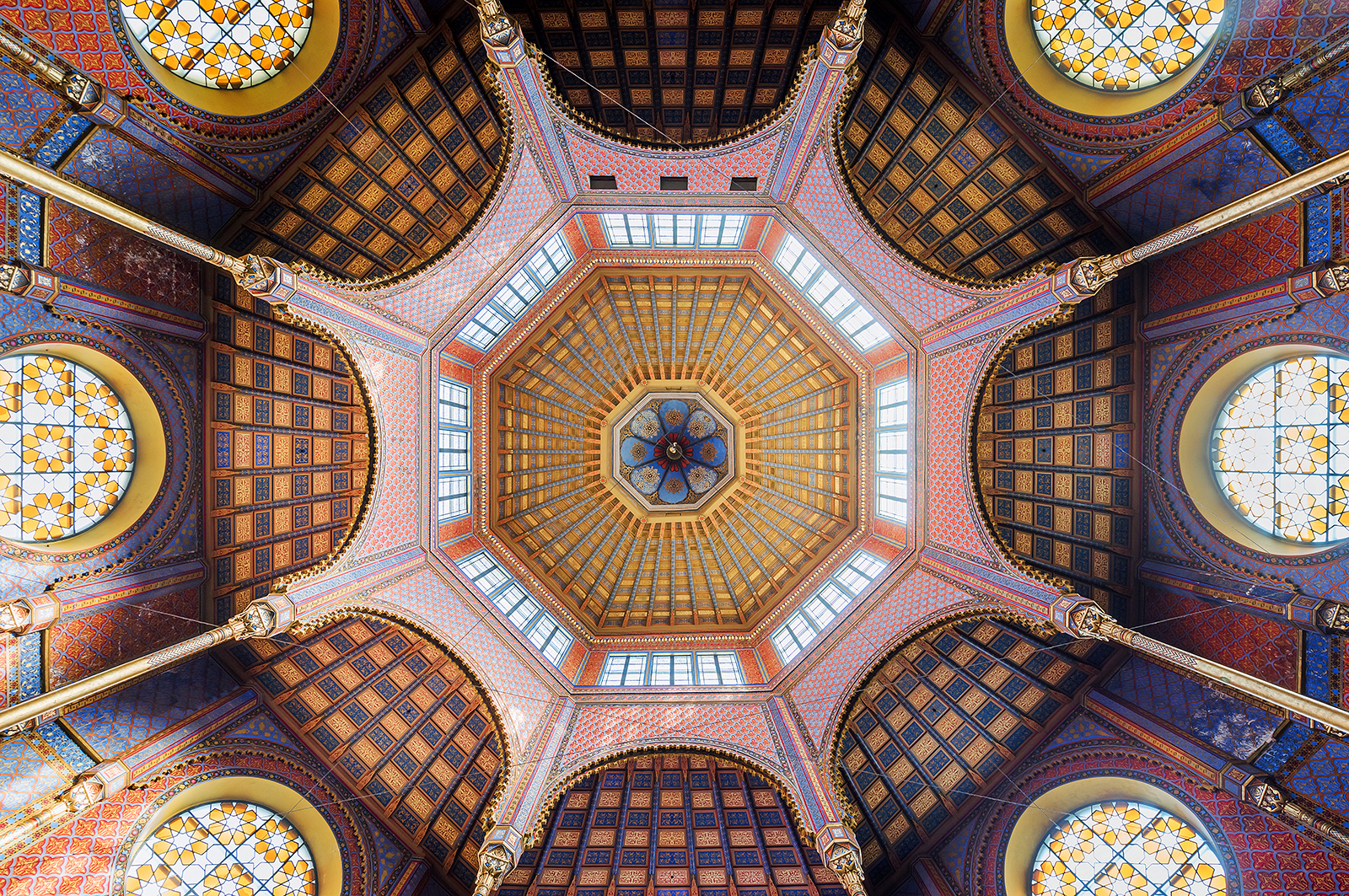The architecture of synagogues has many features, most of which stem from religious requirements and different cultural roots. The arrangement of the buildings is usually central, a dome is often used and the Ark of the Covenant, the symbolic guardian of the Ten Commandments, plays a focal role in the interior of the building.
Europe’s biggest: Dohány utca

The Great Synagogue on Dohány utca is probably the first thing that springs to mind when you think about Jewish houses of worship in Budapest. This is no coincidence, as the building, unveiled in 1859 and accommodating 3,000 people, is not only a famous institution among Hungarian Jewry, but also one of the main sights of Budapest.
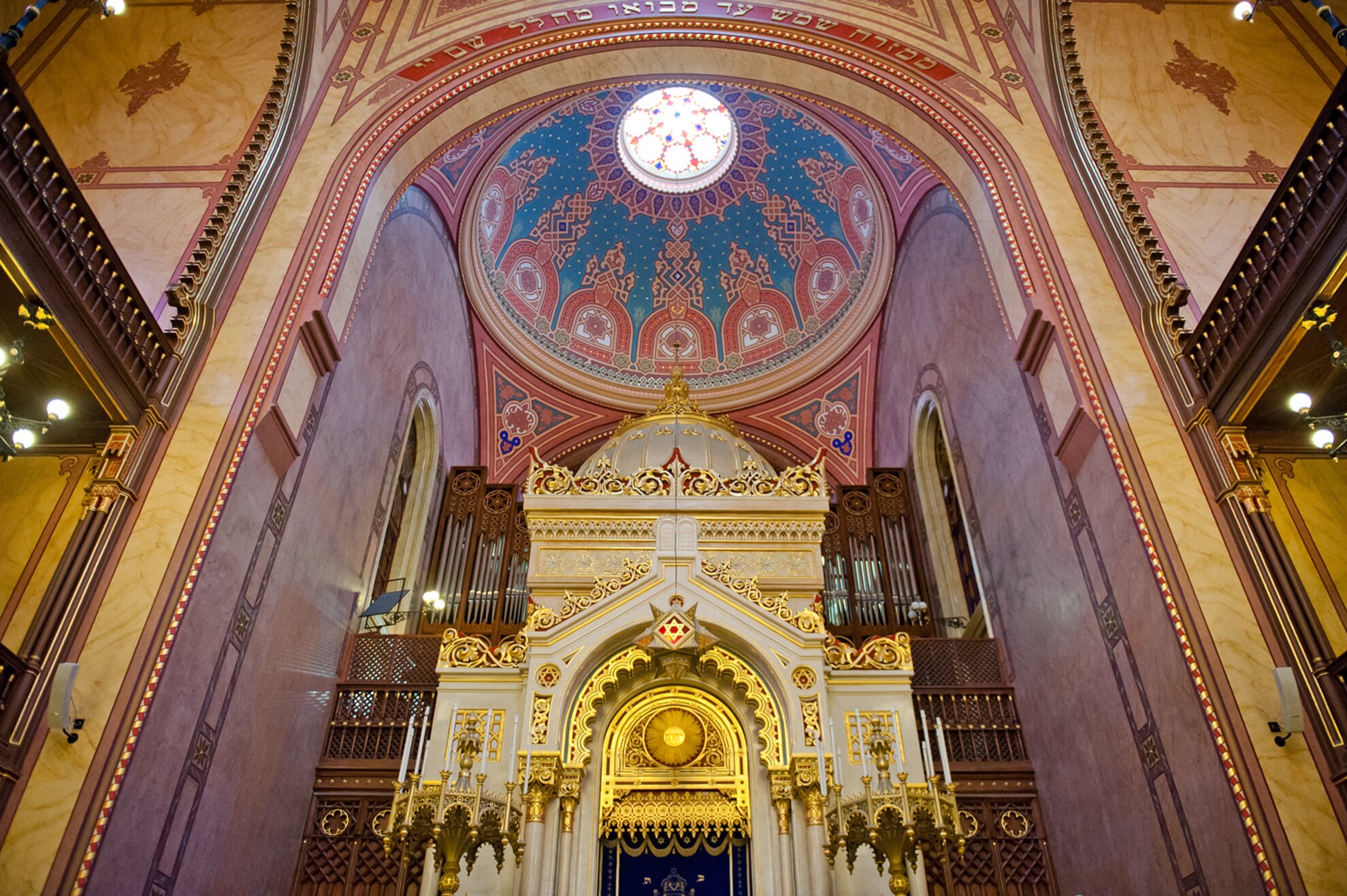
As the number of Jews in Pest was large enough by the mid-19th century, the community decided to build a magnificent synagogue in terms of size and appearance.
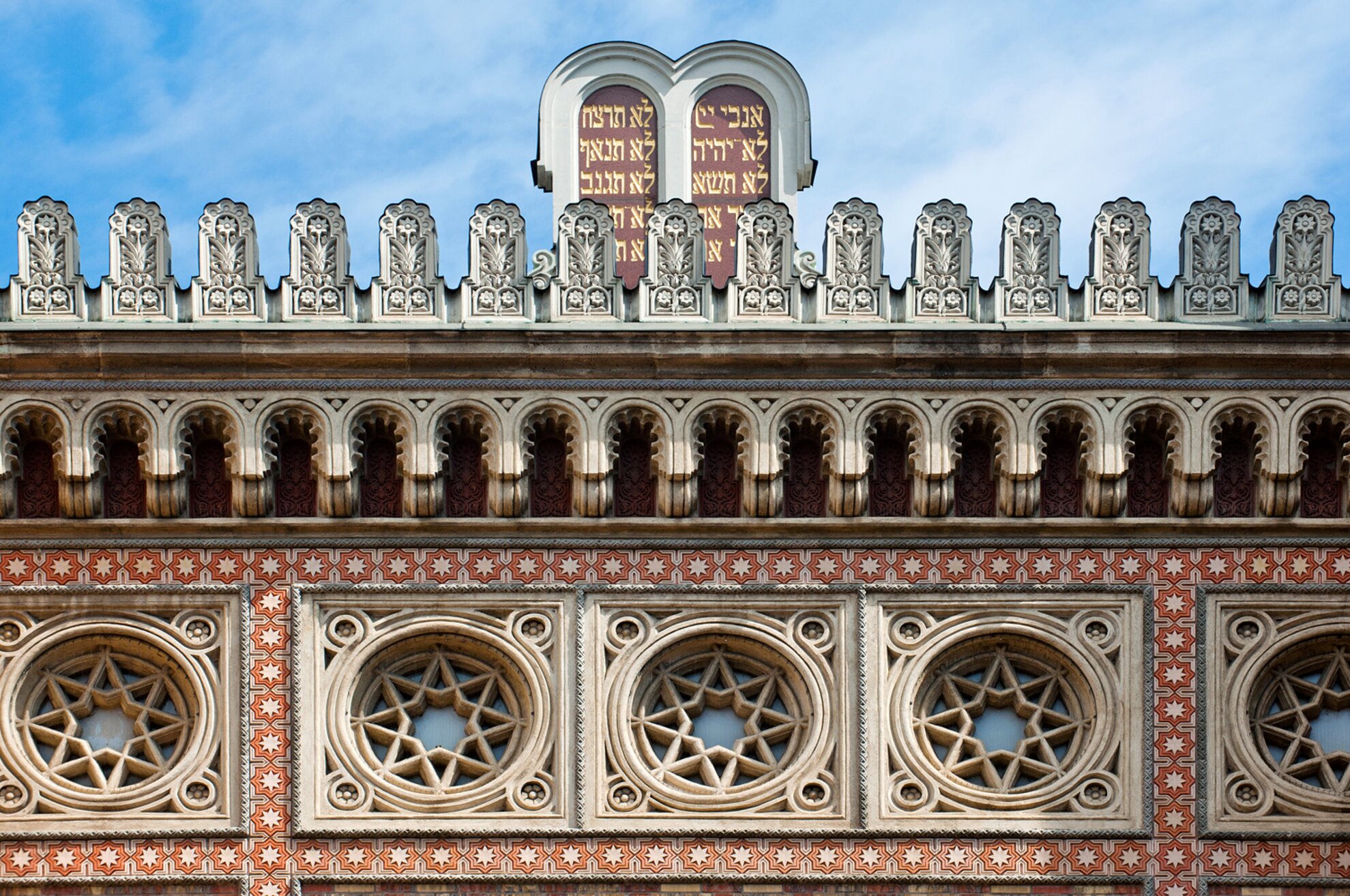
In 1850, several architects in tandem were asked to design it. József Hild, Frigyes Feszl and József Kauser created their own concepts, but in the end the designer of the main synagogue in Vienna, Ludwig Förster, was commissioned to build the one on Dohány utca. Today the twin-towered building, rich in Moorish features, is the largest synagogue in Europe. 1074 Budapest, Dohány utca 2
Inclusivity: Rumbach Sebestyén utca
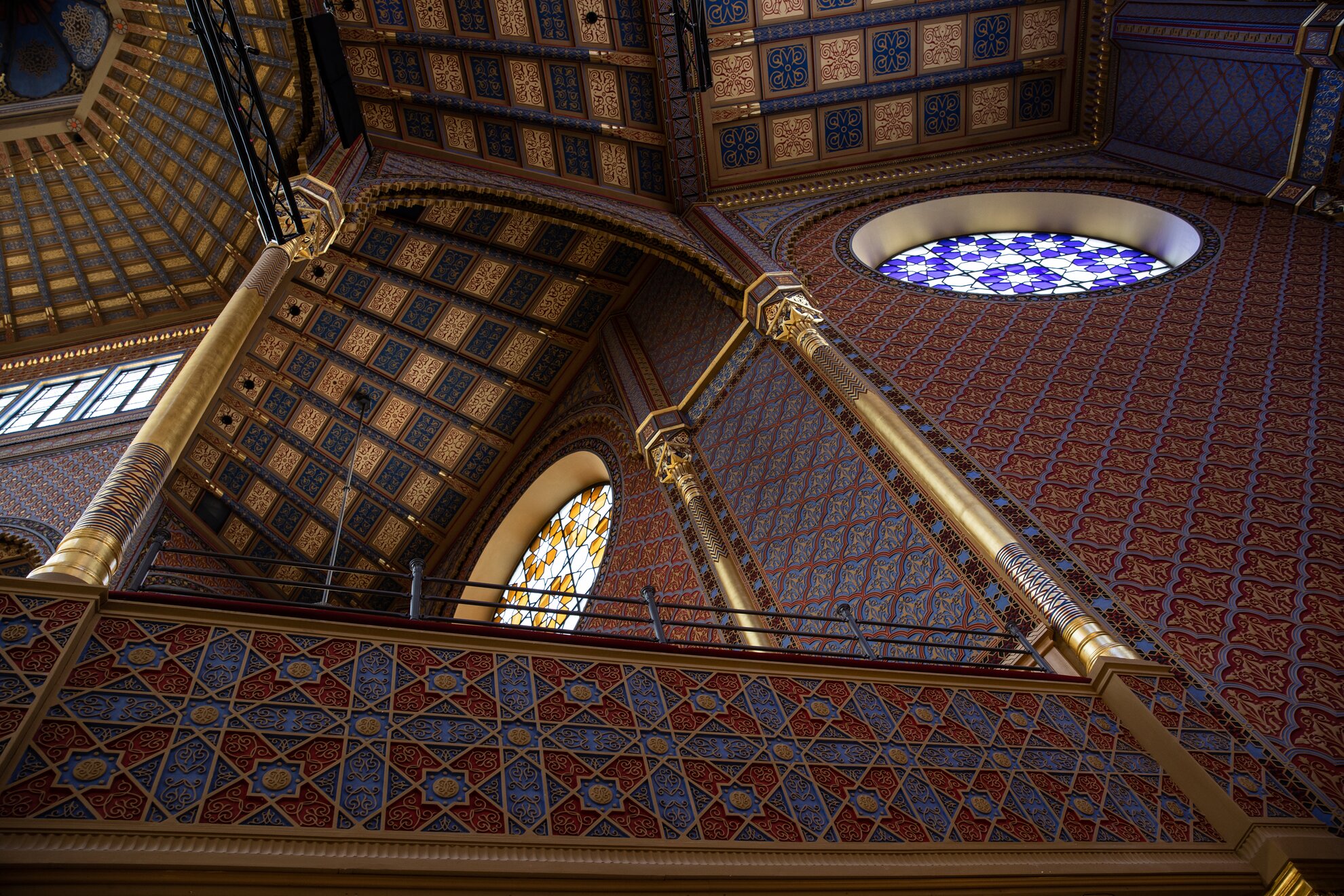
For several years, people have walked past the synagogue on Rumbach Sebestyén utca, a few hundred metres from the Great Synagogue, without realising what was behind the scaffolding. Designed by one of Vienna’s most famous Art-Nouveau architects, Otto Wagner, when he was just 27, the building was the first major project of his life.
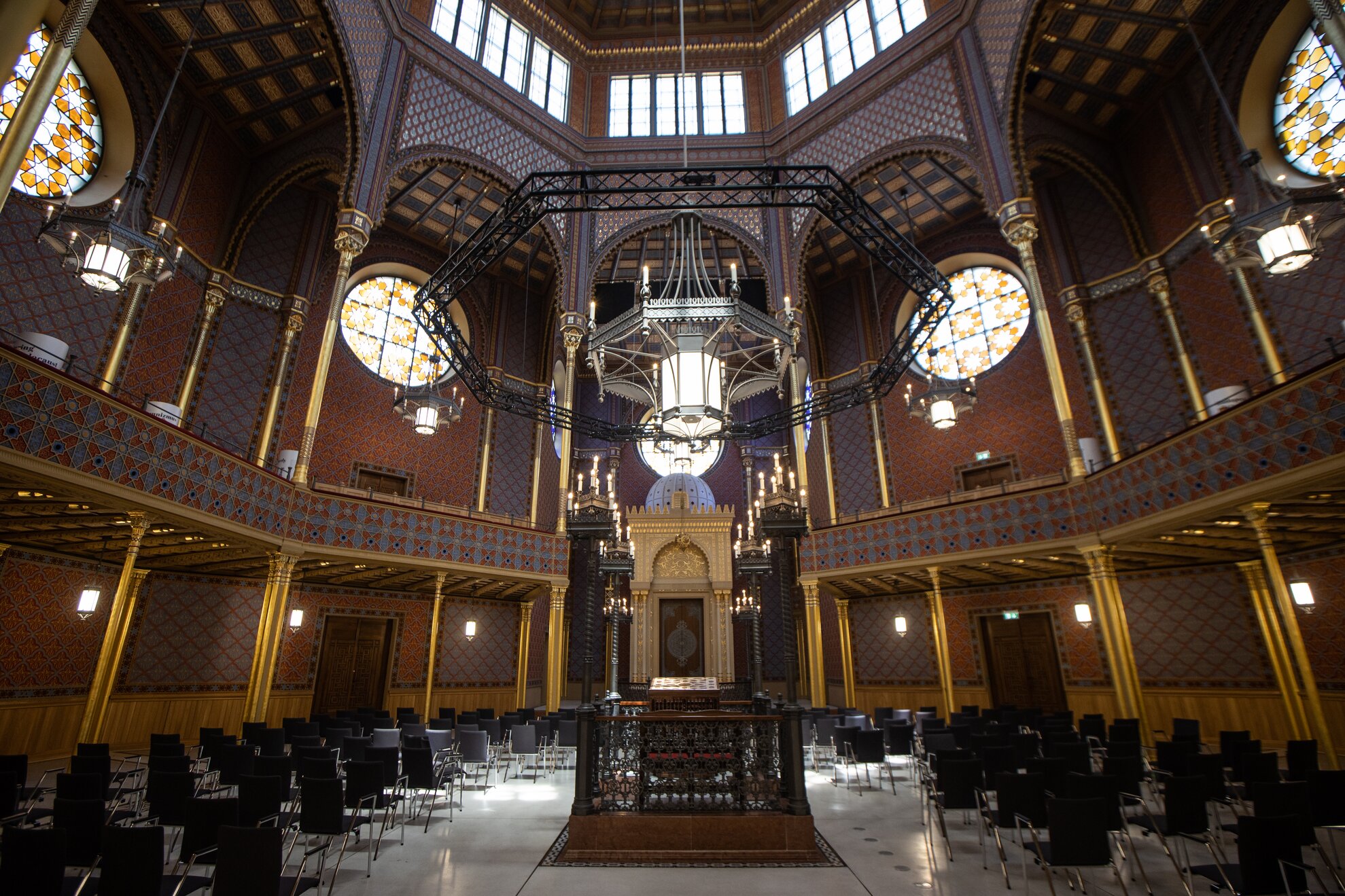
While the Pest community trusted the architect, he did not have such luck with the City Council. He used a different technique to provide the building with a completely new structure, but there was no expert at home who could inspect it, so the young architect had to personally undertake it upon himself that the synagogue would remain in place for 150 years.
Rich in Byzantine and Moorish features, in the colours of red, blue and gold, the synagogue opened in 1874. Recently reopened, the Rumbach Sebestyén utca Synagogue can be converted into a concert venue with a push of a button. 1075 Budapest, Rumbach Sebestyén utca 11-13
Maintaining tradition: Kazinczy utca
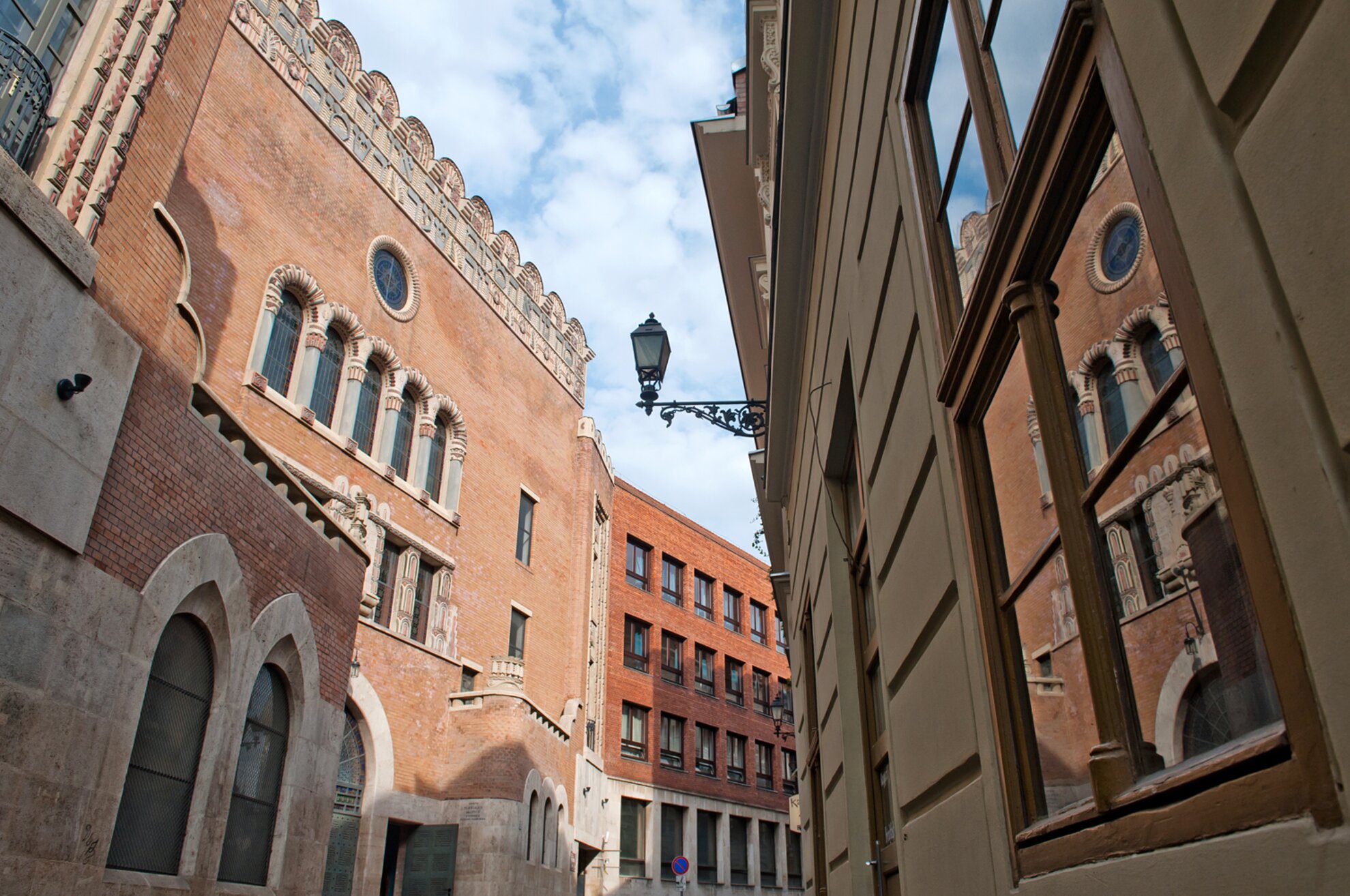
This busy, narrow section of Kazinczy utca, close to Budapest’s bar quarter, is often crowded with tourists. Aligned with a row of houses rises one of the most characteristic buildings of ecclesiastical architecture. The Kazinczy utca Synagogue, designed by Sándor and Béla Löffler, was built in 1912-13 for the most traditional community, living according to very strict rules.

The interior is decorated with windows painted by the famed Miksa Róth, and the building complex includes not only a synagogue, but also a house of prayer, a main office, a kindergarten, a Talmudic school, a butcher’s shop and a mikveh, or ritual bath. 1075 Budapest, Kazinczy utca 27-29
